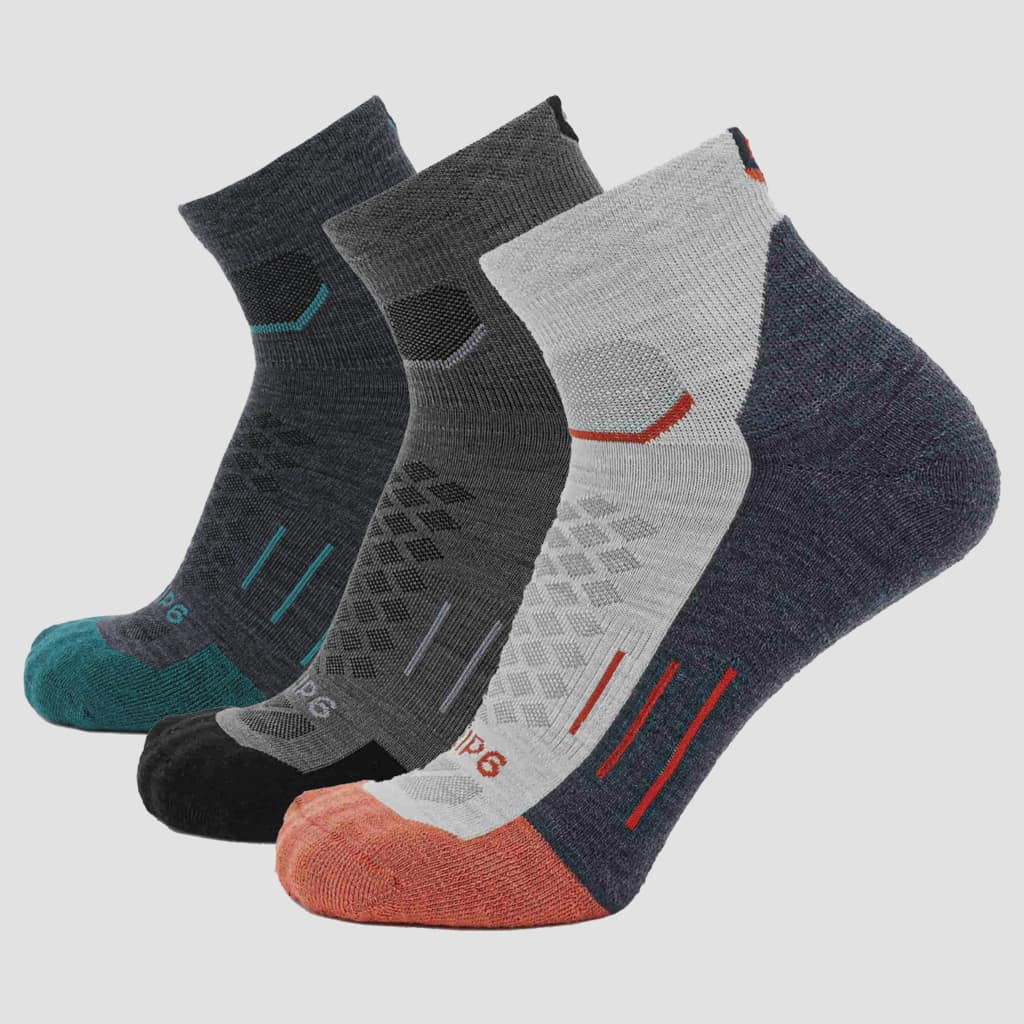To continue to grow and learn as a company and as individuals, we always look for new ways to expand what we offer, not just to get something new out there, but to get you something great and unique and to challenge ourselves as a manufacturer. We believe the Titanium Series covers that ground beautifully. We designed, built, struggled... and now love the finished buckles. We hope you love them just as much.

Our search for a buckle material to add to our lineup (Aluminum and Carbon Fiber) was difficult. We wanted something strong and durable yet lightweight. A metal we could manufacture entirely by ourselves and which allowed us the versatility to create a variety of new styles and colors that stood the test of time. After some searching, we found it: Titanium!
Titanium’s majesty lies in its extremely high strength-to-density ratio. It is about as strong as steel, but weighs 45% less, and is twice as strong as aluminum. Because it is so lightweight for its strength, it has become the ideal metal for use in aerospace and other high-end manufacturing.
In fact, Titanium has found an application in nearly every industry, from paint and toothpaste to cancer treatment and high-powered vacuums. Titanium was discovered in the 18th century, but it wasn’t until 1910 in New York that we finally were able to isolate it. From that time, it has grown in popularity and credibility. And for good reason; it’s durable, lightweight, biocompatible, corrosion resistant, and beautiful.
The main reason titanium is so durable is thanks to the non-porous layer of oxidation that forms on the surface when exposed to air. This layer is able to protect the bulk without needing to be very thick. It makes titanium and its alloys so non-corrosive that it is often used in maritime industries for making the hulls of ships and submarines.
That oxidization is the same reason titanium can be colorful, bright, prismatic. Lucky for us, DIY anodizing titanium videos are all over YouTube! Anodizing in this case means controlling the layers of oxide on the surface of the titanium. It’s a fairly straightforward process that requires electricity and some very mild chemicals like Borax laundry booster. Our engineers built a small anodizing process to manipulate the oxide layers and create the variety of colors we offer. It's a fascinating process. The titanium buckle is first cleaned in an ultrasonic bath to remove any grease or debris. Next it takes a quick dip in an etch bath that strips away a thin layer of oxide. Finally, we submerge the buckle in a borax solution. The magic happens during this final step when electrical current is passed through the solution. A thin, clear titanium oxide layer uniformly grows on the surface and the metal appears to take on a different colors depending on the voltage used and the subsequent level of oxidization that occurs. Incredibly, no dyes or paints are used at all! The bath takes only about a minute then the buckles are dried and ready for their ultimate destination on your belt.

History and Science of Titanium
Historically, titanium was a tricky molecule to isolate. The metal was first discovered in 1791 by William Gregor in Great Britain. He found it by analyzing some black sand from a stream. Some years later it was rediscovered by Prussian chemist Martin Heinrich Klaproth. Before even knowing the metal’s impressive qualities, he named it after the Titans of Greek mythology. Was it a premonition that led Martin to choose that name? Fate, perhaps? We will never know. But whatever led him to pick it, it was a fitting choice.

Titanium is “friendly” - it loves to bond with other elements. The result is there is very little pure titanium found in nature. Therefore, it must be extracted in a laboratory setting. There are several different processes used for creating pure titanium from its ore state. All of them are very costly and time-consuming, hence the disparity between the metal’s great abundance on earth (7th most abundant metal!) and higher price point (lame!). The first pure metallic titanium was made in 1910 by heating it to a very high temperature under great pressure with sodium. It wasn’t until 1932 that titanium was able to leave the lab and enter the commercial setting with the development of the Kroll Process which is still used for most titanium today. The search is still on for more cost-effective and timely ways of isolating the natural titanium found on earth.
But to turn our gaze heavenward, one cool thing about titanium is that it’s a metal for the new space age. Several of the rocks retrieved from the moon during the Apollo 17 mission were found to contain as high as 12.1% titanium (as opposed to .63% on earth). We’ve also found it in meteorites. Fittingly, titanium alloys return to space as the frames and engine pieces of astronautical devices due to its incredible strength without the weight or corrosion of other metals.
Titanium Goes to Work Everywhere
Titanium found its first usage in the military during the 1950s. It was a Cold War staple for jet and submarine frames. The U.S. government even found it prudent to maintain a large stockpile of the material until the 2000s. It didn’t work well because the rough ore form of titanium (called sponge) is very porous and breaks down quickly.
Racing automotive and motorcycle manufacturers choose titanium for frames and engine pieces because of its strength-to-weight characteristics. Even ferriers prefer it for their horses’ shoes. From its birth in a supernova to the frames of race cars and spacecraft, titanium has proved itself durable, reliable, and strong enough to be an integral piece of your wardrobe.

Titanium has also done some amazing things in the medical field. It is one of our finest biocompatible metals, making it a first choice for implants and joint replacements. Dental implants of titanium can remain intact for decades. Titanium also doesn’t cause any skin allergies, which can be a lifesaver for some and quite useful in a buckle (for those with nickel allergies in particular).

Unfortunately, the titanium supply chain in the U.S. is suffering. We believe that although we may no longer need a national stockpile of titanium sponge, supporting U.S. production is important for continued growth in manufacturing independence. The pandemic has done nothing but bolster our belief in the importance of local, sustainable manufacturing supply chains. We want to do our part and you can too! Check out our beautiful collection of new titanium buckles. Everyday you can support modern and future American manufacturing by wearing a piece of the galaxy!







3 comments
Rick
Can custom designs be cut into the titanium?
Thomas Deming
You don’t have to remove your belt to go through Pre-Check. Also titanium sponge does not breakdown as written in the history of titanium. There are a number of things I would take issue with. There is nothing in your manufacturing process that aerospace manufacturers have not been doing for years. Titanium alloys are not that difficult to work with, you just went through a learning curve.
Taylor
Will this belt buckle pass through TSA Pre-Check security without triggering the metal detector? That’s my only complaint about my GRIP6 belt, which I have to leave at home when I travel in order to speed up my TSA Pre-Check security process.
Leave a comment
All comments are moderated before being published.
This site is protected by hCaptcha and the hCaptcha Privacy Policy and Terms of Service apply.